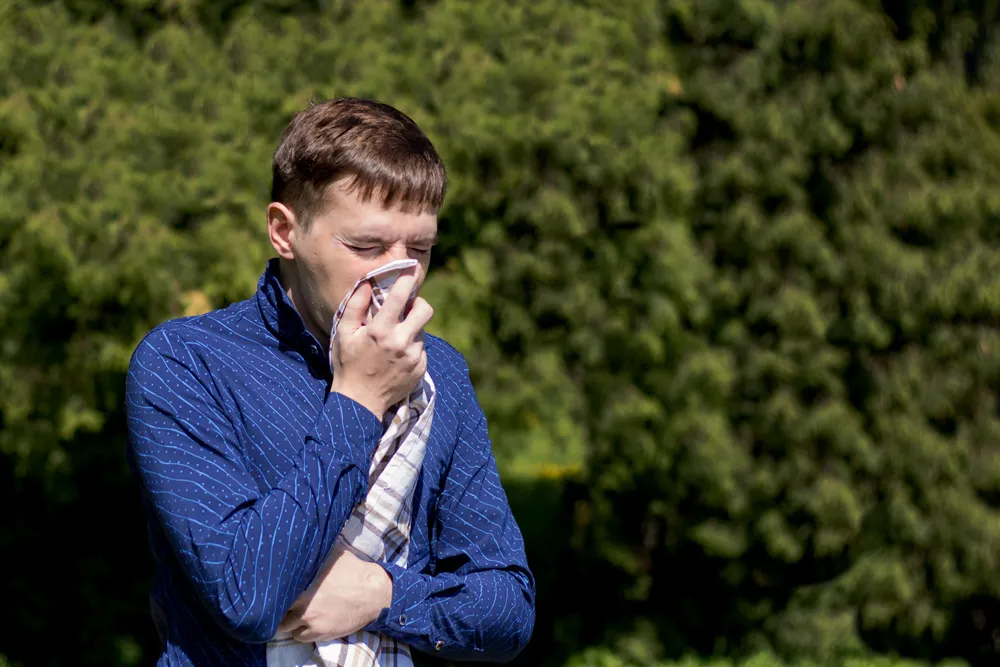Cold Weather Respiratory Health Tips for Asthma Patients on Biologic Therapy
What to Know
- Cold, dry air can trigger airway inflammation and worsen asthma symptoms.
- Biologic therapy helps calm the underlying inflammation that drives moderate-to-severe asthma.
- Staying consistent with your biologic therapy, especially in-office biologic therapy, helps keep winter flares under control.
- Simple daily habits, like using a scarf, humidifying your home, and avoiding indoor irritants, can make breathing easier.
- Knowing your triggers and adjusting your routine early can help you stay symptom-free during winter.
Why Cold Weather Makes Asthma Management More Challenging
When temperatures drop, you may notice your breathing feels tighter, heavier, or more reactive than usual.
This isn’t your imagination; cold air is a well-known asthma trigger. Because cold air is often dry, it can irritate your airways, increase inflammation, and make your lungs more sensitive to everyday triggers.
Winter adds stress to the respiratory system; this is why patients like you living with moderate-to-severe asthma need a little extra care and awareness during the colder months.
If you’re receiving biologic therapy, you already have a powerful layer of protection working behind the scenes to calm airway inflammation. And as the weather shifts, minor adjustments to your routine can help your lungs feel more supported and comfortable.

How Biologic Therapy Supports You During Winter
Biologic asthma therapy targets the specific inflammatory pathways that make your airways sensitive, swollen, or overreactive.
When you stay consistent with your treatment, especially with in-office biologic therapy, you give your lungs the best chance at staying stable through seasonal triggers.
Here’s how biologics support you this time of year:
- They help reduce chronic airway inflammation.
- They make your lungs less reactive to cold, dry air.
- They may reduce the risk of winter exacerbations.
- They support long-term symptom control when paired with your usual asthma plan.
If you ever feel unsure about timing, dosing, or symptoms, your healthcare team is always there to guide you.

Cold Weather Tips to Protect Your Breathing
1. Keep Your Airways Warm
Cold air can constrict your airways within minutes. You can reduce the risk of cold-weather-induced symptoms by:
• Wearing a scarf or soft mask over your nose and mouth.
• Breathing through your nose to warm air before it reaches your lungs.
2. Add Moisture to the Air
Winter air—both indoors and outdoors—tends to be dry. You can protect your lungs by:
• Running a humidifier at home.
• Keeping indoor humidity around 40–50%.
• Avoiding wood-burning stoves or fireplaces when possible.
3. Monitor Indoor Triggers
You may spend more time indoors during winter, so keeping your home lung-friendly matters. Try:
• Dusting and vacuuming regularly.
• Keeping pets out of the bedroom if they trigger symptoms.
• Changing HVAC filters monthly during peak usage.
4. Stay Consistent with Biologic Therapy
Biologics work best when doses are on schedule. To stay protected:
• Keep every in-office biologic therapy appointment, or reschedule promptly if you miss one.
• Set reminders for treatment days.
• Inform your provider if symptoms increase.
Biologics don’t work like rescue inhalers. To maximize their effectiveness, consistency is key; think of them as your long-term protection during the winter months.
5. Keep Exercising (But Warm Up Slowly)
Regular physical activity helps keep your lungs strong. To prevent cold-weather flare-ups:
• Choose indoor workouts when temperatures are very low.
• Cover your mouth and nose with a scarf during outdoor walks.
• Start with a gentle warm-up to reduce airway stress.

When to Contact Your Provider to Inquire about In-Office Biologic Therapy
Reach out to your healthcare team if you notice:
- Increased nighttime symptoms.
- More frequent rescue inhaler use.
- Wheezing that lasts longer than usual and doesn’t respond to traditional medications.
- Shortness of breath during everyday activities.
Winter asthma flares are treatable, and catching them early is always best. And if questions come up along the way, your healthcare team is always there to help you breathe comfortably and confidently.
Breathing Easier All Winter Long
Cold weather doesn’t have to disrupt your breathing or your daily life.
With consistent biologic therapy, a few simple home adjustments, and mindful winter habits, you can keep your asthma well-controlled all season long.

FAQ: Cold Weather, Asthma, and Biologic Therapy
Here are the most common questions people ask about asthma and cold weather.
Q: Does cold air make asthma worse?
Yes. Cold, dry air irritates the airways and can trigger inflammation, coughing, or wheezing.
Q: Can biologic therapy help prevent winter asthma flare-ups?
Yes. Biologic asthma therapy reduces airway inflammation, lowering the risk of winter-related symptoms.
Q: Should I continue in-office biologic therapy during winter?
Absolutely. Staying consistent with your in-office biologic therapy is one of the best ways to maintain control during cold weather.
Q: Is it normal to use my rescue inhaler more often in winter?
It can happen, but needing to use your rescue inhaler more frequently is a clear sign to talk to your provider about adjusting your plan and discussing if in-office biologic asthma therapy is recommended.
Q: What can I do to breathe easier outdoors in the cold?
Use a scarf or face covering, breathe through your nose, and warm up your body before activity. Doing this will help protect your lungs and minimize the risk of an asthma attack.
Q: Do humidifiers help with asthma in winter?
Yes. Adding moisture to dry indoor air often helps reduce airway irritation.
Q: When should I call my doctor about winter symptoms?
You should always call your doctor if your symptoms worsen, flare-ups become more frequent, or you use your rescue inhaler more than usual.
